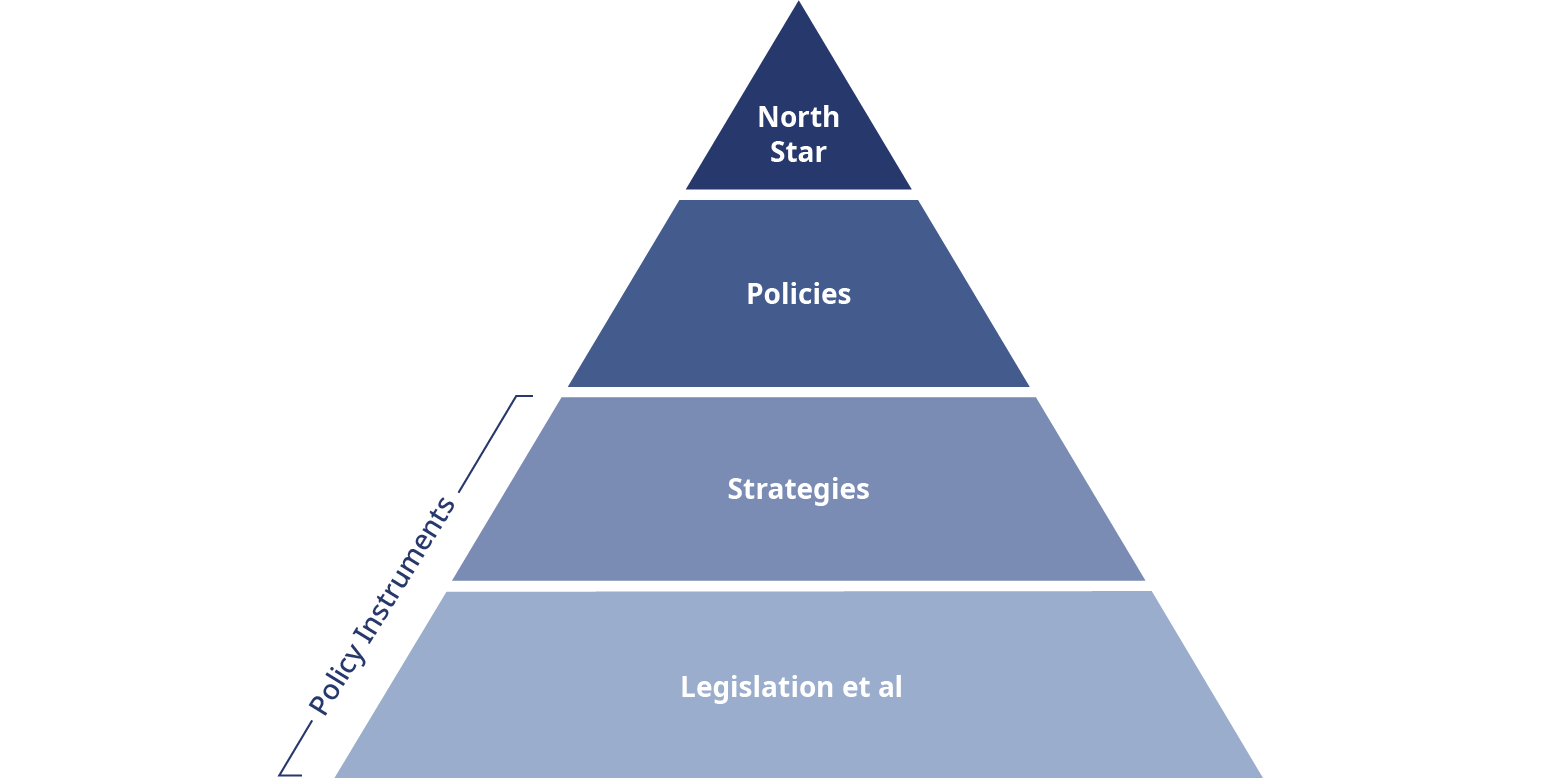Governments have a multitude of priorities that cross every aspect of their citizens’ lives. Those priorities, and therefore policies, cut across the economy, healthcare, education, and housing. They cut across sectors and industries. They also cut across the ministries and entities that conduct a government’s business. These multiple and diverse policies must work together for a government to achieve its objectives.
The complexity of these ecosystems, however, means those policies often do not align. Priorities often overlap or contradict each other. As the Gulf region has transformed over the past 30 years, making dramatic leaps in numerous metrics, governments must navigate their economies and societies as they grow larger and more complex.
GCC’s North Star and the role of the center of government
Our latest report, “Center Of Government’s Vital Role In The GCC,” provides a framework to guide the region’s governments. It applies principles and structures to the mechanisms available to government to set its course and reach its vision — its North Star.

The report demonstrates how governments can prepare to mitigate what we are calling “policy drag,” where some policies counteract, duplicate, or pull in a different direction from each other. Using the metaphor of how air traffic controllers guide planes from takeoff to landing, we show how implementing a central policy air traffic control system (PATCS) can guide policies and ensure all entities are aiming in the right direction. Given the number and complexity of policymakers across any given government, a dedicated center of government unit is required to align all policies across the policy universe to reduce policy drag.
A strong center of government (CoG) — the entity that directly supports the leadership of a country in policy and decision making — is at the heart of a strong institutional arrangement for policymaking. The CoG maintains the overarching view of all policy proposals and actions, ensuring that the North Star is always guiding decisions.
Governments also achieve harmonization by adopting a suitable governance model. For example, a centralized, multitiered structure can include an overarching policy committee, such as a cabinet, and thematic subcommittees that align with the leadership's focus areas and national priorities — the cabinet committees.
Benefits of harmonization and institutionalization of policymaking
Ensure coherence
Develop core principles that guide policymaking at all levels to navigate complexity and achieve the North Star vision effectively.
Codify government directions
Create a clear link between medium-term national priorities and strategies through clearly articulated government directions in institutionalized policy papers.
Clarify horizon of possibilities
Define the horizon of possibilities — boundaries and constraints — within which actions and strategies are developed.
Maintain cohesion
Address cross-sectoral tradeoffs, create synergies, and eliminate redundancies to ensure cohesive action while fostering collaboration across stakeholders to ensure alignment.
Support Legislative Efforts
Inform the legislation required in the country and provide a frame of reference for the subsequent development of legislative instruments.
Gulf countries have, overall, shown themselves to be highly agile with dynamic and driven leadership. The visions laid out by regional leaders have borne fruit. The next chapter will be one of greater complexity given the size and scale of continued ambition coupled with a vastly more complex machinery of government.
The time has come to institutionalize the process of cross-policy universe alignment and ensure governments consistently work to reduce policy drag and its resulting drain on public resources and braking effect on achieving ultimate objectives. A dedicated Center of Government Policy Unit with the requisite human and artificial intelligence (AI) assets will be key to unlocking efficiency in government’s journey toward a clearly defined North Star, and guiding everything underneath it from policy agendas, individual policies, and their respective tools such as strategies, programs, projects, regulation, legislation, and budgeting.


